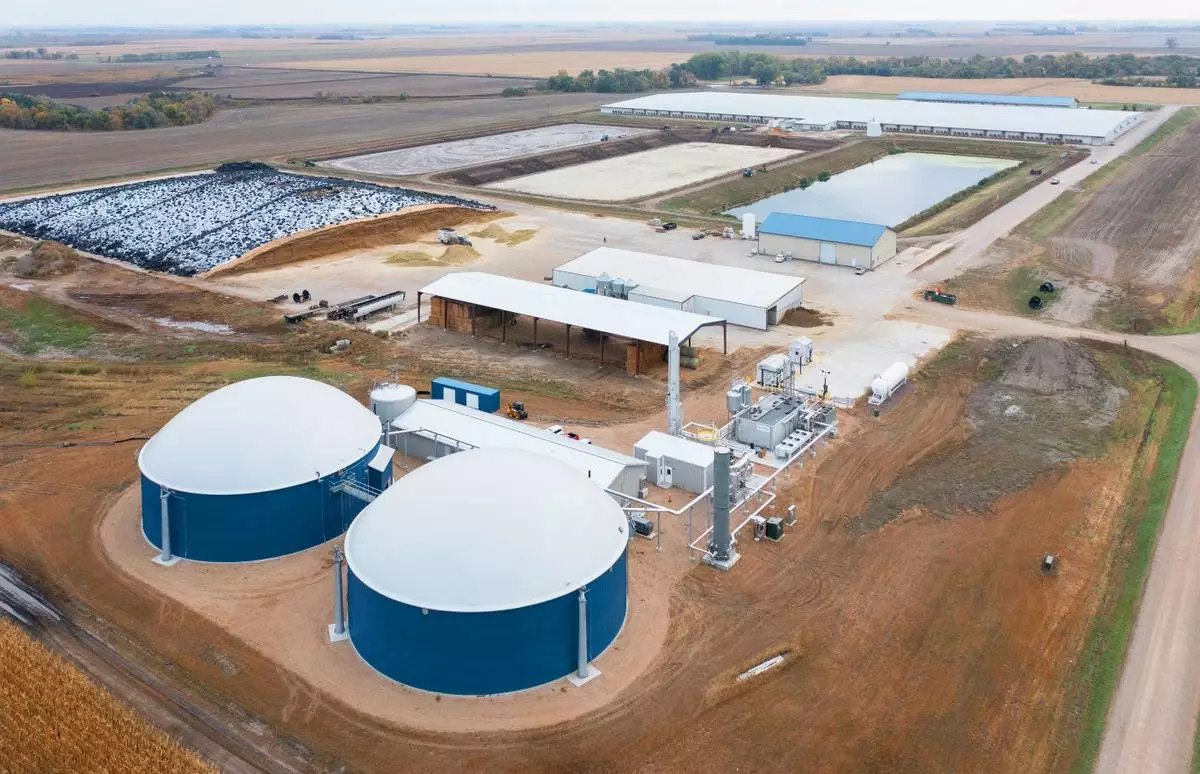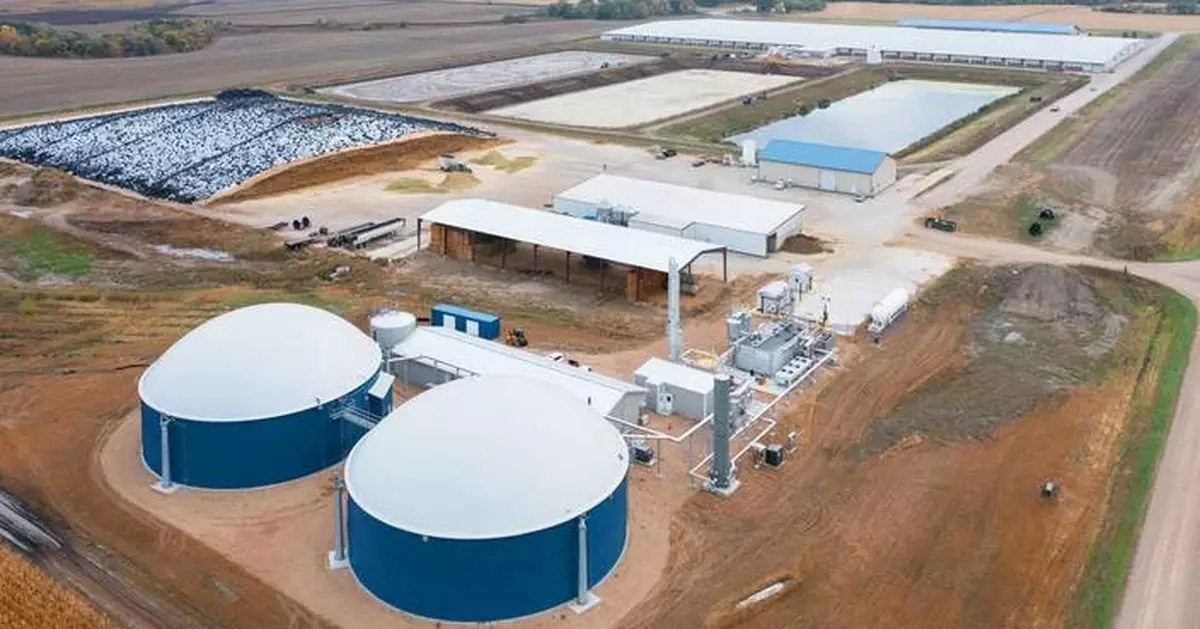NEWPORT BEACH, Calif.--(BUSINESS WIRE)--Apr 23, 2024--
Clean Energy Fuels Corp. (Nasdaq: CLNE ) today announced its latest renewable natural gas (RNG) facility at Victory Farms Dairy in Revillo, South Dakota, has successfully completed construction and is injecting pipeline quality RNG into the interstate natural gas infrastructure.
This press release features multimedia. View the full release here: https://www.businesswire.com/news/home/20240423562965/en/
The Victory Farms two-digester facility is utilizing the manure of 6,000 jersey cows, which could process approximately 120,000 gallons of manure each day to produce an estimated 900,000 gallons of negative carbon-intensity RNG annually.
The ultra-clean RNG produced at the facility will find its way to Clean Energy’s fueling network, helping commercial fleets reduce their greenhouse gas (GHG) emissions significantly and immediately. Clean Energy currently operates over 600 stations around North America, that provide fuel and services to customers including some of the largest logistics operators like UPS and Amazon, many transit agencies including those in New York City and Los Angeles, and dozens of waste companies including WM, Republic Services and Waste Connections.
Developed in partnership with Dynamic Renewables and financed through one of Clean Energy’s production joint ventures, the construction costs of the RNG facility, including the build of the manure collection facility, digestors and processing plant, totaled approximately $26 million. Clean Energy is in the process of filing the necessary applications to generate federal and state environmental credits.
“We are committed to working with dairies to bring more RNG into the market. Projects like Victory Farms will provide us the fuel to help decarbonize heavy-duty transportation while simultaneously providing an additional revenue stream for dairy owners and helping with their waste management. With fleets quickly learning that RNG is a proven solution readily available now, it is perfect timing that Victory Farms and the other dairy facilities are coming online to meet the growing demand,” said Clay Corbus, senior vice president of renewables at Clean Energy.
“Victory Farms is part of an industry that is uniquely positioned to have the opportunity to produce such a sustainable and valuable by-product from everyday waste. We are incredibly proud of what we are doing here, and that we’ve been able to partner with Clean Energy to help create a healthier planet,” said the owners of Victory Farms.
Agriculture accounts for nearly 10 percent of U.S. GHG emissions and the transportation sector accounts for another 28%, according to the U.S. Environmental Protection Agency. Capturing methane from farm waste lowers these emissions. RNG, produced by that captured methane and used as a transportation fuel, significantly lowers GHG emissions on a lifecycle basis when compared to diesel. This allows RNG to be one of the only fuels to receive a negative carbon-intensity score based on the reduction of emissions at the source and at the vehicle.
About Clean Energy
Clean Energy Fuels Corp. is the country’s largest provider of the cleanest fuel for the transportation market. Our mission is to decarbonize transportation through the development and delivery of renewable natural gas (RNG), a sustainable fuel derived by capturing methane from organic waste. Clean Energy allows thousands of vehicles, from airport shuttles to city buses to waste and heavy-duty trucks, to reduce their amount of climate-harming greenhouse gas. We operate a vast network of fueling stations across the U.S. and Canada as well as RNG production facilities at dairy farms. Visit www.cleanenergyfuels.com and follow @ce_renewables on X and LinkedIn.
Forward-Looking Statements
This news release contains forward-looking statements within the meaning of Section 27A of the Securities Act of 1933 and Section 21E of the Securities Exchange Act of 1934 that involve risks, uncertainties and assumptions, including without limitation statements about amounts and timing of manure expected to be produced; the amounts and timing of natural gas expected to be produced or consumed; characteristics and performance of natural gas engines and trucks; the environmental and other benefits of Clean Energy’s fuels; the availability of environmental, tax and other government regulations, programs and incentives; and the impacts of legislative and regulatory developments. Actual results and the timing of events could differ materially from those anticipated in these forward-looking statements. The forward-looking statements made herein speak only as of the date of this press release and, unless otherwise required by law, Clean Energy undertakes no obligation to publicly update such forward-looking statements to reflect subsequent events or circumstances. Additionally, the reports and other documents Clean Energy files with the SEC (available at www.sec.gov ) contain risk factors, which may cause actual results to differ materially from the forward-looking statements contained in this news release.


Clean Energy Renewable Natural Gas (RNG) Production Facility, Victory Farms Dairy, South Dakota. (Photo: Business Wire)

















